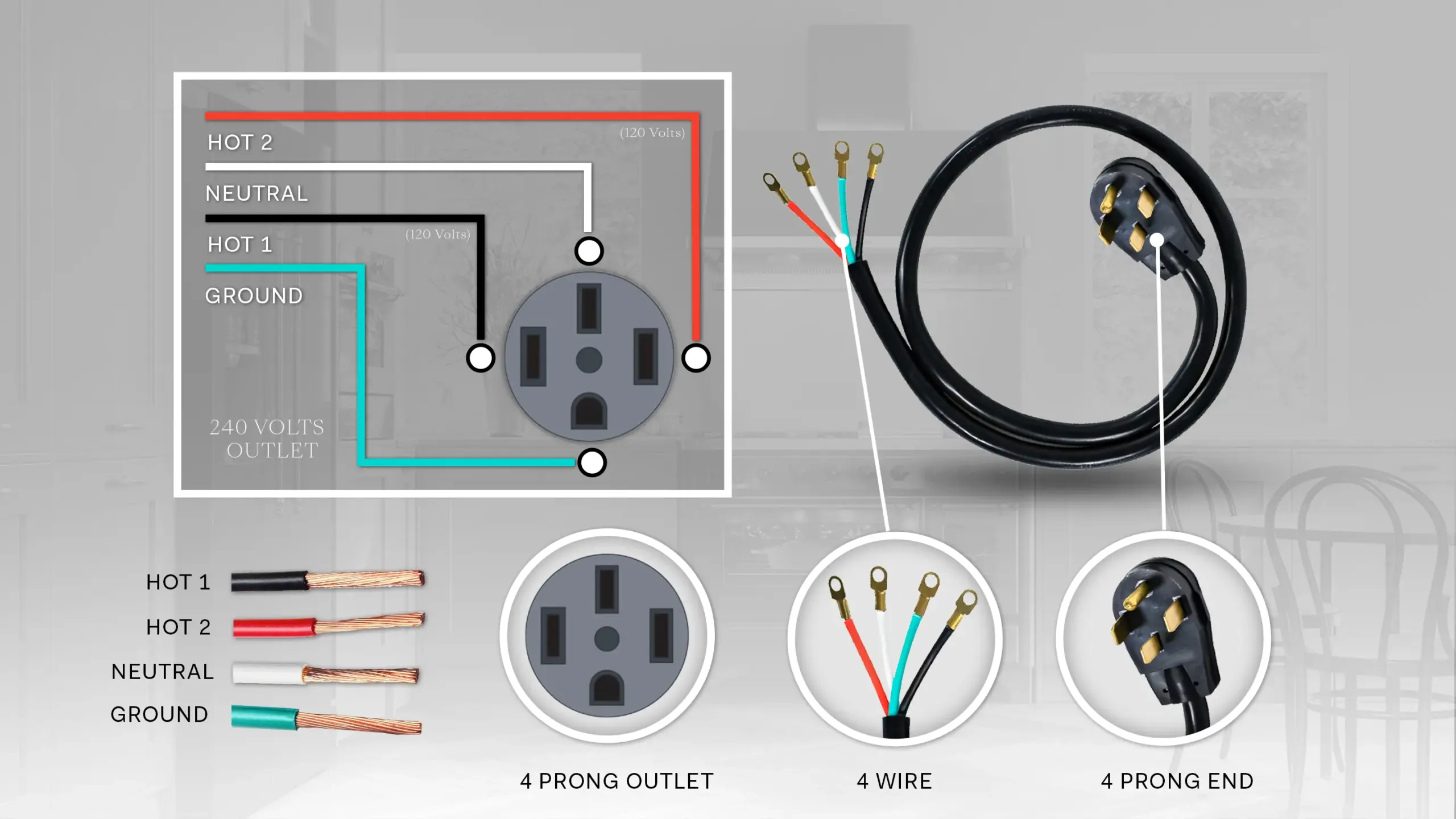Are you preparing to install a new ILVE range in your kitchen? Whether you’ve already made your purchase or are still comparing models, understanding the electrical requirements is essential. It’s not just about powering the appliance, it’s about meeting modern safety standards, supporting performance, and complying with the National Electrical Code (NEC).
Let’s explore what you really need to know to install your ILVE range properly.
The Basics: 240-Volt Power Is Standard
All ILVE ranges sold in the U.S., including dual-fuel, electric, and induction models, are designed to operate on 240 volts. These are high-demand appliances, especially when ovens, cooktops, and electronic controls run simultaneously.
Even though dual-fuel ranges use gas for the cooktop, the oven and all electrical features (lighting, convection fans, displays) still require a dedicated 240V electrical circuit. There are no ILVE models intended for use with a standard 120V household outlet.
Dual-Fuel and Induction Models Require a 4-Wire, 240V Circuit
For safe operation and code compliance, all ILVE ranges must be connected to a four-wire 240V circuit, which includes:
- Two hot wires (L1 and L2): Each carries 120 volts, combining to provide 240 volts across the circuit.
- One neutral wire: Carries return current for 120V components such as lights, timers, and fans.
- One ground wire: Provides a safe return path in case of a fault. It must remain isolated from the neutral.
This four-wire setup is mandated by the NEC for all new installations. The 1996 NEC update eliminated the practice of sharing the neutral and ground in new appliance circuits. Today, neutral and ground must remain electrically separate from each other inside the panel and the appliance.

Why This Matters
- Older 3-prong outlets (3-wire setups), which shared the neutral and ground, may still exist in older homes. These can only be used under specific NEC grandfathering rules when replacing an existing range on an existing circuit.
- New installations or renovations must use a 4-prong outlet and a 4-wire cord.
- The most commonly used outlet for ILVE ranges is the NEMA 14-50R, which accommodates the four-conductor configuration.
Always verify that your outlet type matches the range’s plug and wiring and never attempt to modify cords or adapters to “make it work,” doing so risks electric shock, fire, and voiding your appliance warranty.
ILVE USA Offers Only Dual-Fuel and Electric Models
ILVE USA no longer offers gas-only ranges. All currently available ILVE ranges fall into one of the following categories:
- Dual-Fuel: Gas cooktop with an electric oven.
- Induction or Electric: Fully electric ranges with induction or traditional radiant cooktops.
This means every ILVE range sold in the U.S. requires a 240V electrical connection. Even if your kitchen already has a gas line, you will still need a dedicated 240V circuit for the oven and other powered components.
What This Means for You
- You cannot plug an ILVE range into a standard 120V household outlet.
- Attempting to use an older 3-prong outlet for a new ILVE range may violate code and compromise safety.
- Installation will require an electrician if you’re upgrading from an older gas-only range or remodeling your kitchen.
NEC Compliance and Installation Guidelines
According to the National Electrical Code (NEC):
- All new range circuits must use four conductors: two hots, one neutral, and one equipment ground.
- The neutral and ground must be electrically isolated from each other at both the panel and the appliance.
- A dedicated branch circuit is required for each range installation.
- The circuit breaker and wire size must match the load listed on the appliance’s nameplate.
Why You Should Hire a Licensed Electrician
Installing a high-powered 240V appliance is not a DIY project. A licensed electrician will:
- Ensure the circuit and outlet are sized to match your range’s requirements.
- Install a NEC-compliant 4-wire receptacle and breaker.
- Confirm that neutral and ground conductors remain properly isolated.
- Handle any panel upgrades or wiring changes required for older homes.
They can also verify whether an older 3-prong outlet qualifies as a grandfathered exception or must be upgraded for compliance.
Final Recommendations
ILVE ranges bring European craftsmanship and performance to modern kitchens, but they also demand a thoughtful, code-compliant installation. By using the correct voltage, outlet type, and wiring method, you’ll ensure your appliance operates safely and efficiently.
Avoid these common mistakes:
- Using outdated 3-prong outlets for new installations.
- Assuming gas cooktops don’t need high-voltage power.
- Guessing breaker size instead of checking the appliance’s rating.
When in Doubt:
- Consult your model’s installation manual
- Hire a licensed electrician
- Refer to the latest National Electrical Code (NEC)
With the right setup, your ILVE range will deliver precision, elegance, and performance to elevate your cooking experience.
